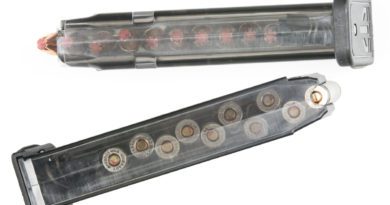Anti-Choking Device: Solutions For Life-Threatening Situations
Choking is a terrifying ordeal. Picture yourself enjoying a meal, and suddenly, you’re gasping for air because something went down the wrong way. It unfolds swiftly and demands an immediate response. Do you have an anti-choking device on hand? Do you know CPR?
Many of us have witnessed it — watching someone struggle silently, their eyes wide with fear as they signal urgently for assistance. It’s not an isolated incident; every year, thousands find themselves in these harrowing situations due to food or small objects obstructing their airway.
Around the globe, this issue persists as a significant concern, particularly among children and older adults.
However, I come bearing some good news. After immersing myself in extensive research on a life-saving device that includes both medical studies and heartfelt testimonials from users, I stumbled upon a beacon of hope: an anti-choking device.
After going down the rabbit hole, I’ve not only purchased a LifeVac Home Kit, but I also keep an anti choking device in my vehicle. It brings me comfort knowing I have a solution to a very scary issue.
Related Article: Boo Boo Kit — The Must-Have DIY First Aid Parenting Hack!
Imagine anti-choking devices as silent guardians nestled within your first aid kit — prepared to leap into action when conventional methods like back blows, and abdominal thrusts may fall short.

In this article, we’ll dive into how innovations such as LifeVac and The Dechoker can emerge as pivotal lifesavers by swiftly clearing blocked airways for both children and adults alike.
These two anti-choking devices are considered to be the best in their industry:
· LifeVac
Disclaimer: This article is not meant to be used as medical advice. I am not a medical professional and don’t pretend to be one on the weekends. While this article is for informational purposes only, should you decide to purchase an anti-choking device, it is important that you get proper training on how to use it and practice with it to ensure you know how to quickly deploy it in an emergency.
Table of contents
- What Is a Choking Emergency?
- What is an Anti-Choking Device?
- How Do Anti-Choking Devices Work?
- Importance of Having an Anti-Choking Device
- Considerations When Choosing an Anti-Choking Device
- The Heimlich Maneuver May Not Get the Job Done — Get an Anti-Choking Device!
- Anti-Chocking Device FAQs
- Anti-Choking Device Resources
Key Takeaways
- Thousands of people, including children and adults, face choking emergencies every year. LifeVac and The Dechoker are tools that can save lives by removing obstructions from the airway.
- Anti-choking devices work by creating a seal over the mouth and nose and using suction to pull out whatever is blocking the airway. Quick action with these devices can prevent severe harm or death.
- When choosing between LifeVac and The Dechoker, consider ease of use, safety features, reliability, training support, and size compatibility for both kids and adults. Both have unique designs suitable for quick deployment in emergencies.
- Having an anti-choking device at home brings peace of mind. It prepares you for life-threatening situations involving choking hazards among family members or guests.
- Choking is a leading cause of accidental injury deaths worldwide; however, immediate response with an anti-choking device could turn grim statistics around by saving lives efficiently.
What Is a Choking Emergency?
Choking emergencies happen when something blocks the airway, making it hard to breathe. They can occur in people of all ages and pose a life-threatening situation.
Statistics on choking emergencies
Let’s talk straight about the urgency of choking emergencies. Surprising as it might sound, every year, thousands of people face this terrifying situation, with outcomes that can be fatal.
To shed light on the magnitude of this issue, I’ve pulled together some key statistics. It’s a reality check that shows us why being prepared is not just wise — it’s essential.
| Statistic | Detail |
|---|---|
| Children rushed to hospitals annually | 12,000 |
| Rank of choking in unintentional injury deaths | Fourth |
| Deaths from choking in 2020 | 3,000 |
| Global mortality burden | Increasing |
These numbers paint a clear picture. Every year, 12,000 children find themselves in emergency rooms due to choking incidents. It’s a sobering thought. Choking stands as the fourth leading cause of accidental injury death.
Think about that — such a preventable cause stands so high on the list. In one year alone, 3,000 lives were claimed by choking. And globally, we’re seeing this threat grow.
Understanding these figures brings home the importance of readiness. It’s not just about knowing what to do; it’s about having the right tools at hand. That’s where anti-choking devices come in. Devices like LifeVac and The Dechoker offer a beacon of hope. They are our allies in turning these grim statistics around.
With this knowledge, the importance of being prepared cannot be overstated. Life, with all its unpredictability, demands it.
Importance of timely response
Choking is a serious emergency that requires quick action. Every year, thousands of kids and adults rush to the hospital because something is blocking their airway. This shows why we need to act fast in these scary moments.
A delay can cause severe harm or even death. Having tools like the LifeVac or The Dechoker at home can make all the difference. These devices are designed for such emergencies.
Using an anti-choking device right away can save a life. It’s about being ready before something bad happens. Think of it as having a fire extinguisher; you hope never to use it, but you’re glad it’s there if needed.
Related Article: Plastic Bite Stick — An Essential Tool for Seizure Victims
Quick thinking and immediate use of these gadgets provide not just a solution but peace of mind, knowing you’re prepared for choking incidents — preparation and swift action are key.
What is an Anti-Choking Device?
An anti-choking device is a tool designed to save lives in choking emergencies. It works by creating a seal over the mouth and nose and using suction to dislodge airway blockages.
I personally believe that everyone should have a choking rescue device in their home — especially if you have kids. The two main airway clearance devices on the market are The Dechoker and LifeVac.
1. LifeVac
Arthur Lih, an air freight entrepreneur, came up with LifeVac. It’s a safety tool that helps remove items stuck in someone’s throat. This innovation is key for dealing with Foreign Body Air Passage Obstructions, a fancy term for choking.
I have various LifeVac kits that contain both an adult mask as well as a child mask. What sets the LifeVac device apart is its simplicity. Imagine a plunger but designed for emergencies when something gets lodged in the windpipe.
LifeVac is a non-powered airway clearance device developed for resuscitating, and using this first aid choking device is straightforward. Place the mask over the person’s nose and mouth who can’t breathe because of something caught in their throat. Then, pull on the handle to create suction and hopefully dislodge the blockage.
Medical experts have given this gadget their thumbs-up since it doesn’t invade the body or require complex maneuvers like some other methods do. It is a viable choking rescue device for kids and adults.
The biggest selling point, and the reason I went with the LifeVac life-saving device, is that the kit covers children and adults, so I am prepared for both scenarios if they arise.
2. The Dechoker
The Dechoker, produced by Dechoker LLC since 2011, is a medical device designed to save lives in choking emergencies. It works similarly to the LifeVac and can be used on children as young as one year old.
Another important feature of the Dechoker is that it prevents any dislodged materials from re-entering the airway, making it safe and effective for use in clearing airway obstructions caused by choking incidents.
The Dechoker has garnered significant attention for its proven ability to save lives in critical situations where immediate action is vital. This anti-choking device offers peace of mind by providing an efficient solution for life-threatening choking incidents.
How Do Anti-Choking Devices Work?
Anti-choking devices work by creating a seal and using suction to dislodge blockages in the airway. They are designed to provide quick, effective solutions for life-threatening situations.
Different types of anti-choking devices, such as LifeVac and The Dechoker, offer options for addressing choking emergencies with tailored features and functionality.
1. Creating a seal over the mouth and nose
To clear someone’s airway, anti-choking devices like the LifeVac and Dechoker create a seal over the mouth and nose. They use suction to dislodge any stuck items by exerting pressure to pull them out.
This is achieved through special masks with patented valves that ensure a secure seal around the mouth and nose, providing the necessary suction force for effective airway clearance.
These devices revolutionize choking rescue by enabling quick and non-invasive intervention in life-threatening situations.
2. Using suction to dislodge airway blockage
Anti-choking devices utilize suction to dislodge airway blockage swiftly. These devices, such as LifeVac and DeChoker, create a seal over the mouth and nose before using suction to clear obstructions.
The LifeVac replicates a forced cough by employing powerful suction that dislodges the obstructive object from the throat, while carers have reported successful use of the DeChoker in saving lives during choking emergencies.
It is crucial to employ these devices correctly and promptly in such emergencies, ensuring their effectiveness for managing foreign body airway obstructions.
3. Differences between LifeVac and Dechoker
Deciding between LifeVac and Dechoker can feel like a big decision.
Both are tools designed to help in choking emergencies. Yet, they have their own set of features that make them stand out. I’ve taken a closer look at both to help you understand their differences in the chart below, which is a Dechoker vs LifeVac comparison.
| Feature | LifeVac | Dechoker |
|---|---|---|
| Mask Integration | Requires placement of a mask | Has an integrated mask |
| Ease of Use | Simple after initial setup | Noted for its convenience due to integrated mask |
| Design Approach | The user must fit the mask during an emergency | Ready to use out of the box with no assembly |
LifeVac asks the user to place a mask on the person choking. This could add a few valuable seconds to the rescue process (assuming you don’t already have it staged with a mask already attached).
On the other hand, Dechoker is ready to go as soon as you pull it out. It has a mask that’s already a part of the device. This makes it a bit more straightforward to use, especially in a panic situation.
Ease of use is critical in emergencies. Dechoker wins points for its convenience, thanks to its integrated mask. This doesn’t mean LifeVac is hard to use, but in a tense moment, every second counts. You want something that won’t require extra steps.
In summary, the main differences lie in how they’re designed for use during an emergency. LifeVac might need a bit more preparation to use correctly. Dechoker, however, is designed for immediate action. Depending on what feels more comfortable and efficient for you could guide your choice. Both aim to save lives, but the right tool for you might just boil down to these distinctions.
Importance of Having an Anti-Choking Device
Having an anti-choking device is vital in life-threatening situations. It provides a quick and effective solution for both adults and children, offering peace of mind during choking emergencies.
To me, the worst feeling in the world would be seeing a child choking and not being able to jump in and help. Sure, cutting up food properly is ideal for preventing choking, but freak accidents happen daily. This is what makes LifeVac and The Dechoker so vital for life saving.
When choosing an anti-choking device, consider its ease of use and effectiveness to ensure preparedness for potential hazards. Buy one to keep at home and another to keep in your vehicle — that’s precisely what I did.
1. Quick and effective solution for life-threatening situations
An anti-choking device swiftly removes choking objects from the airway, providing a rapid and efficient solution for life-threatening situations where there is a victim with an airway obstruction. The DeChoker, backed by reports of saving lives, demonstrates its effectiveness in dire circumstances.
Both children and adults can benefit from these devices, offering peace of mind and readiness for choking emergencies. When choosing an anti-choking device, it is crucial to consider factors such as safety, ease of use, and suitability for both age groups.
2. Can be used on both children and adults
An anti-choking device is suitable for both kids and grown-ups. It provides a quick and effective solution in life-threatening situations, ensuring peace of mind and preparedness. These devices offer a one-way valve that creates a seal over the mouth and nose, using suction to dislodge airway blockages.
They serve as a backup when conventional methods like the Heimlich maneuver have been unsuccessful in clearing the airway obstruction. While there may be skepticism about their effectiveness, it’s essential to consider having an anti-choking device at home or in public spaces where choking hazards exist.
These rescue suction devices are designed to cater to both children and adults, offering peace of mind knowing they can provide swift aid during choking emergencies. When selecting an anti-choking device, it’s crucial to weigh factors such as safety, ease of use, and customer reviews so that you can make an informed decision based on your specific needs.
3. Peace of mind and preparedness for choking emergencies
Having an anti-choking device at home provides peace of mind and ensures preparedness for choking emergencies. Knowing that you have a tool designed to quickly and effectively address life-threatening situations can be reassuring, especially when it comes to the safety of children and adults.
With the statistics on choking emergencies in mind, having an anti-choking device is a proactive measure to safeguard against potential risks. Considering the possibility of such emergencies, being equipped with an anti-choking device gives confidence in handling these critical situations effectively.
Additionally, having an anti-choking device offers a sense of security by providing a practical solution tailored toward addressing airway obstructions. Instead of feeling apprehensive about handling choking incidents without proper tools, owning an anti-choking device empowers individuals to act promptly and decisively during these distressing moments.
Considerations When Choosing an Anti-Choking Device
When choosing an anti-choking device, consider these key factors:
1. Size and Compatibility: Ensure the device is suitable for both children and adults, offering a versatile solution.
2. Ease of Use: Look for a device with clear instructions and minimal steps for quick and effective deployment in emergencies.
3. Safety Features: Seek devices with safety mechanisms to prevent injury during use, especially when dealing with infants and toddlers.
4. Reliability: Consider the track record and user feedback of the device to ensure its effectiveness in real-life choking situations.
5. Training and Support: Look for a device that provides access to training materials or customer support to enhance confidence in usage.
Remember, size and compatibility, ease of use, safety features, reliability, training, and support are crucial considerations when choosing an anti-choking device.
The Heimlich Maneuver May Not Get the Job Done — Get an Anti-Choking Device!

When choking emergencies strike, having an anti-choking device can be a lifesaving solution. Both the LifeVac and the Dechoker offer quick and effective ways to clear airway blockages in both children and adults.
Again, I will vouch for the LifeVac choking rescue kit that I have in my home and vehicle. It’s super easy to use, and I trust my family’s life with it. Whether it’s an adult choking or a child, I am able to use the device (by adding the correct mask) and use LifeVac to dislodge what’s causing the individual to choke.
These devices provide peace of mind, preparedness for emergencies, and are becoming increasingly popular among parents as a preventative measure at home. With ongoing discussions about their effectiveness, it’s crucial to consider these devices as potential interventions for life-threatening situations.
Whether you’re looking to buy the LifeVac or The Dechoker, I really don’t feel you can go wrong. Check the two links below for the best prices I’ve found them online.
· LifeVac
As a side note to close out this article, if you want to support our website and are in need of any tactical gear (or any product for that matter), anything you purchase using our links below will provide us with a small commission. We don’t charge for our free content and our goal is to keep it that way. We don’t have a Patreon account to put things behind a paywall, nor do we sell pics of our feet on OnlyFans.
If you choose to use the links below and make a purchase (at no additional cost to you), we greatly appreciate your support as it helps us continue to publish free content (like this article) on our website:
- Optics Planet (use code SAS5 at checkout for 5% off)
- Amazon
We have also partnered with CCW Safe. It’s the concealed carry coverage that I personally have for myself and my family in the event we need to defend our lives. Feel free to use our CCW Safe link to sign up and get some coverage to protect yourself and your family.
Also if you have a product you would like us to check out and potentially review, please contact us and let’s discuss.
Anti-Chocking Device FAQs
An anti-choking device is a life-saving tool designed to clear the airway of a person who’s choking. It uses suction to remove the obstruction — pretty neat, right? Think of it as a vacuum for emergencies that can be used on both kids and adults.
Absolutely! Whether you’re a parent, teacher, or just someone looking to keep their home safe, these devices are user-friendly. They come with adult and pediatric masks and don’t require any special training. Plus, they have instructions that are easy to follow.
Yes! The market offers several options, like LifeVac and Dechoker. Both are effective in rescuing choking victims by providing airway clearance when traditional first aid methods aren’t successful.
Definitely — it’s all about being prepared for those scary moments we hope never happen. Having an anti-choking device at home gives you peace of mind, knowing you have a way to help if someone starts choking.
Consider what fits your needs best — LifeVac is known for its ease of use and effectiveness without needing power or batteries; it never expires either! Other brands might offer something unique, too, so look into each one’s features before deciding.
After successfully clearing the blockage from the victim’s airway, always follow up with medical professionals — even if everything seems okay now, it’s essential they check out the person who choked just to be sure everything truly is alright.
Anti-Choking Device Resources
- https://www.consumerreports.org/babies-kids/child-safety/what-to-know-buying-lifevac-anti-choking-device-for-baby-a1121348037/
- https://pmc.ncbi.nlm.nih.gov/articles/PMC7793855/
- https://nypost.com/2023/08/08/im-a-nurse-and-mom-and-this-is-what-you-need-to-know-about-anti-choking-devices/
- https://www.firstaidproadelaide.com.au/blog/anti-choking-device/
- https://www.sciencedirect.com/science/article/abs/pii/S0300957220300873
- https://www.nsc.org/community-safety/safety-topics/choking
- https://www.researchgate.net/publication/339541654_A_systematic_review_on_the_effectiveness_of_anti-choking_suction_devices_and_identification_of_research_gaps
- https://pmc.ncbi.nlm.nih.gov/articles/PMC8998090/
- https://dechoker.com/clinical-studies/
- https://fox2now.com/business/press-releases/ein-presswire/676244948/willnice-choking-rescue-device-defending-innovation-and-saving-live/
- https://pmc.ncbi.nlm.nih.gov/articles/PMC10204033/
- https://lifevac.net/


*Disclosure: This article may contain affiliate links or ads, which means we earn a small commission at no extra cost to you if you make a purchase through these links. These commissions help support the operation and maintenance of our website, allowing us to continue producing free valuable content. Your support is genuinely appreciated, whether you choose to use our links or not. Thank you for being a part of our community and enjoying our content.
PLEASE CONSIDER SHARING THIS ON YOUR SOCIAL MEDIA TO HELP OTHERS LEARN MORE ABOUT THIS TOPIC.





